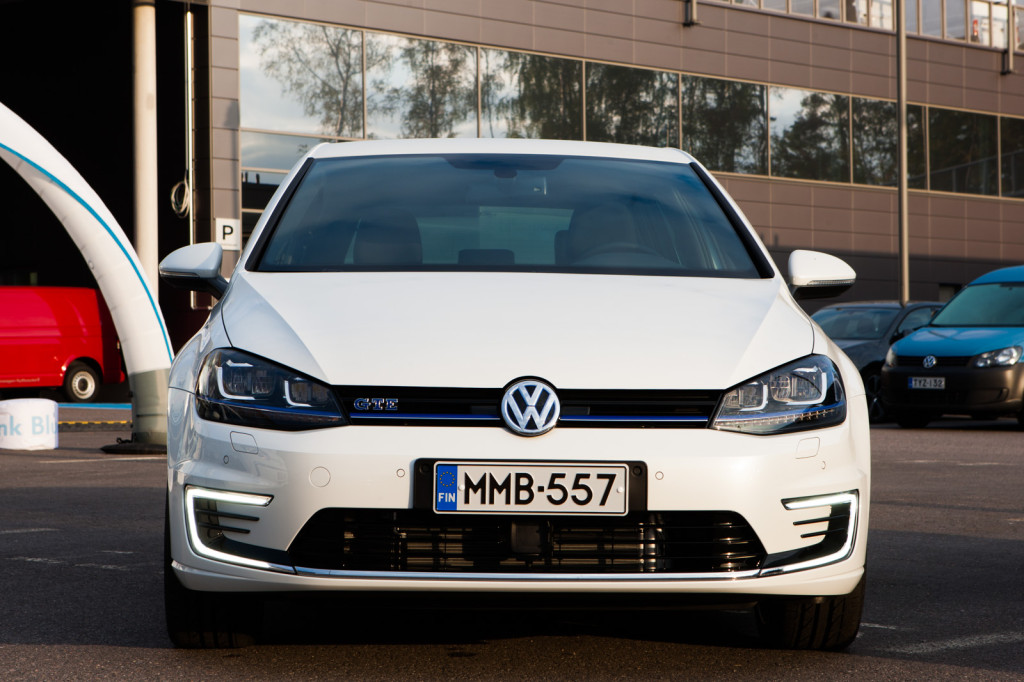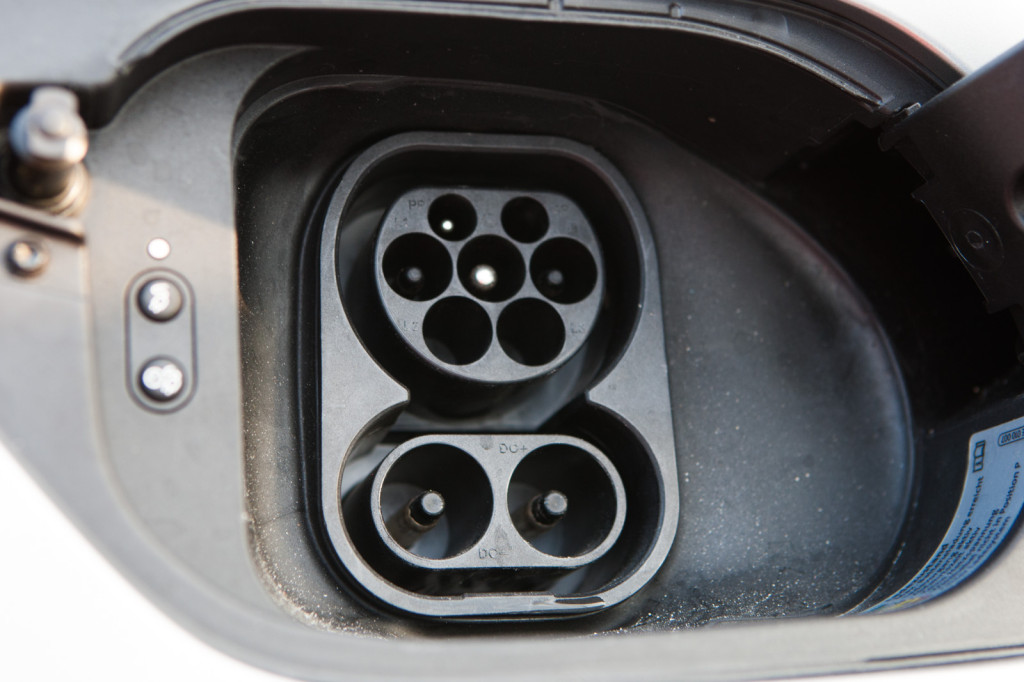
The sister of e-Golf is the new plug-in hybrid Golf GTE.
Thanks to local Volkswagen in Finland, I had a chance to test drive the Volkswagen e-Up and e-Golf couple of weeks ago. I wrote couple of posts right away in Finnish, here and here.
But now it’s time for some Londonish post.
To really understand the whole point of Volkswagen e-Golf, we first need to discuss the Golf in general. VW Golf is not just another car. It’s a complete definition and culture of German engineering skills. It’s the greatest middle-class car ever invented. Toyota Corolla or Auris is compared to Golf, and nothing else.

There’s also fast charging option with 40 kW CCS.
The electrification of Golf is massively important to Volkswagen. With e-Golf Volkswagen says they essentially can and will make cars not just gas or diesel driven, but also natural gas, electric and electric-gasoline hybrid (the GTE Golf). And not just any car, but the one and only Golf.
So how does e-Golf perform? Very well. It’s clear Volkswagen has tested and tried every cable, bult and piece of this car before the launch. They simply cannot afford to fail.
If you are looking for surprises or some magical feel in e-Golf, you’re probably going to be disappointed. The car is very much like any other Mk7 Golf, it just happens to be electric. Or maybe it’s little more silent. And maybe the response to pushing down the pedal is more instant.
e-Golf shares the very same MQB-platform as any other Golf, or the future VW Passat or Skoda Octavia. So be ready for plug-in Passats and all-electric Octavias too.
But talking of details, e-Golf has some interesting features. For example, the “slow” charging is only 3,6 kW. This means full charge will take full 8 hours, not four like with other manufacturers do with 7,2 kW chargers. The range with 24 kWh battery is told to be 130-190 km. It’s pretty much the same what Nissan Leaf and BMW i3 are doing. You could have expected a little longer range here as the Golf is newer model. But considering the MQB platform, the battery is already split up in the floor of the car, maybe there just wasn’t any chance to make room for more batteries.
Sure Volkswagen is expecting the battery technology to develop fast, and some rumors claim they already have 37 kWh batteries in field testing. This would allow e-Golf to travel 300 km with one charge. Nissan has already promised the next generation of Leaf to do that and Tesla is doing at least the same with their future Model III.
e-Golf battery also happens to miss temperature control. Absence of active cooling means lighter batteries and easier (cheaper) construction. But it sure is interesting how battery management works on high temperatures of US, Southern Europe or Africa. Nissan was in big trouble with their Leaf some years ago as the batteries didn’t cope with heat. In Finland this probably is not going to be any issue. Globally Volkswagen has guaranteed the battery to keep at least 70% capacity for eight years or 160 000 km.
At the end of the day, e-Golf is an excellent, high quality German made piece of car engineering. If you’re OK with range and the price (about 41 000 € in Finland) there shouldn’t be any reason not to consider it.
But don’t go for test drive of e-Golf if you dont’t like Golf in general. The e-Golf is 100% Golf.